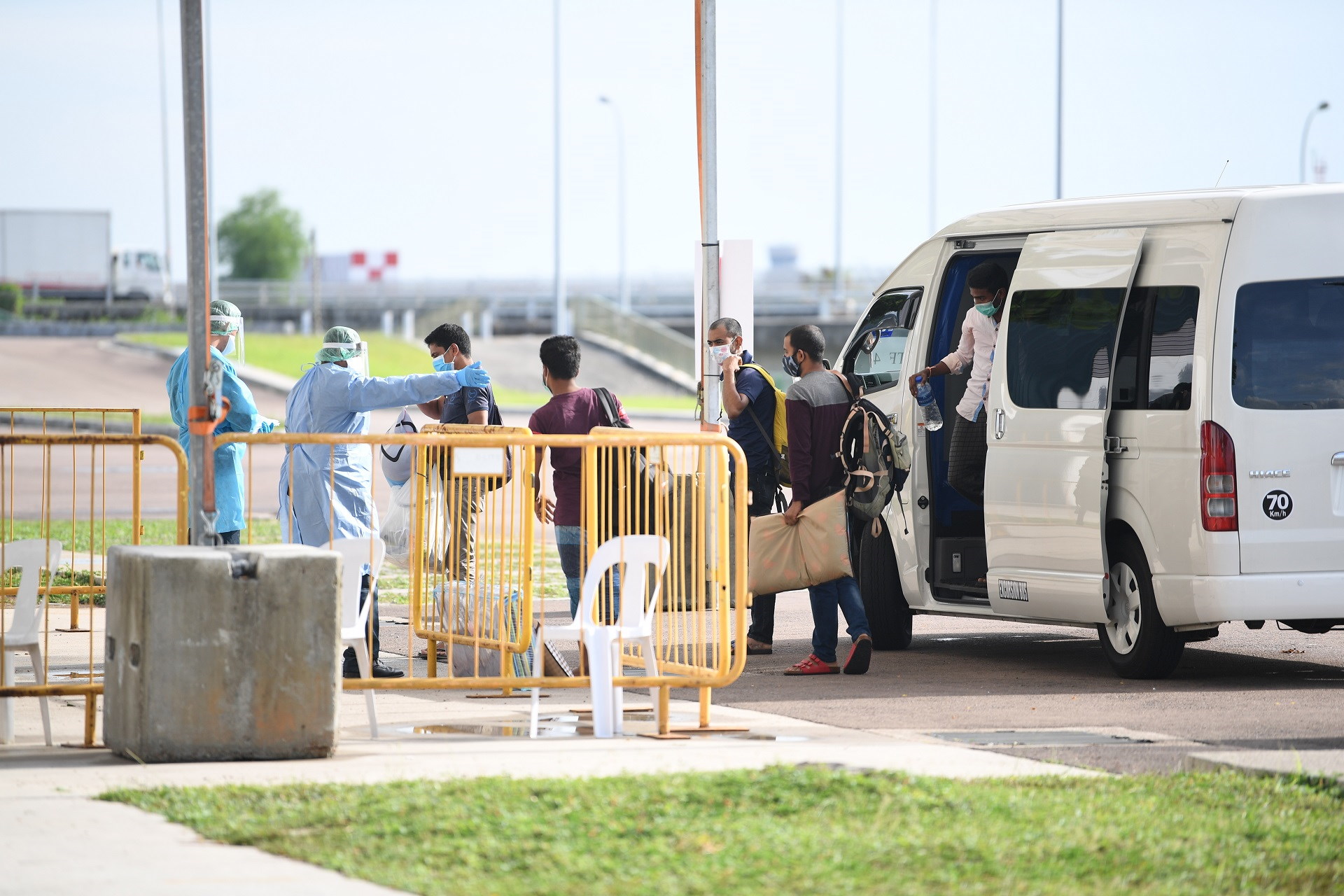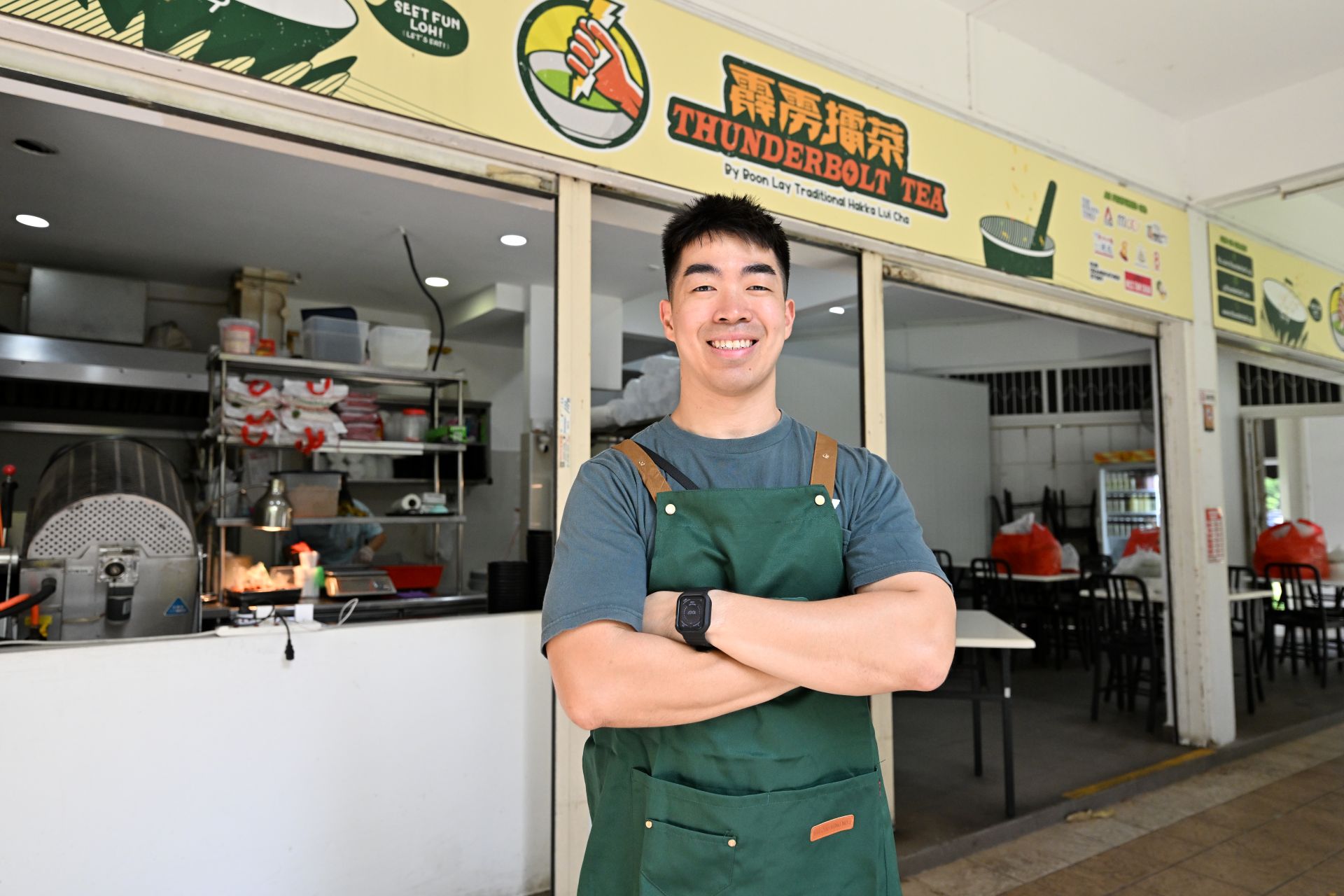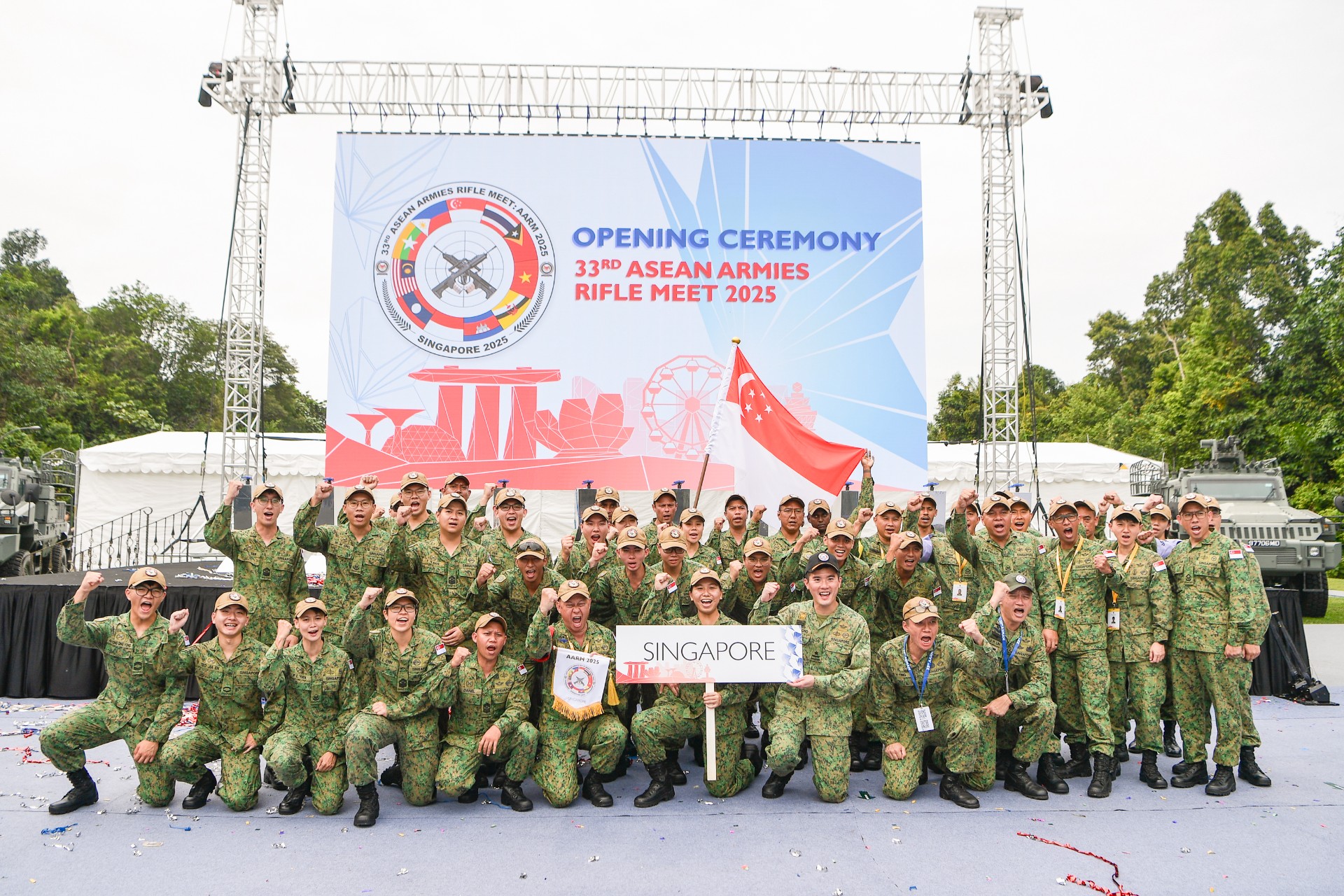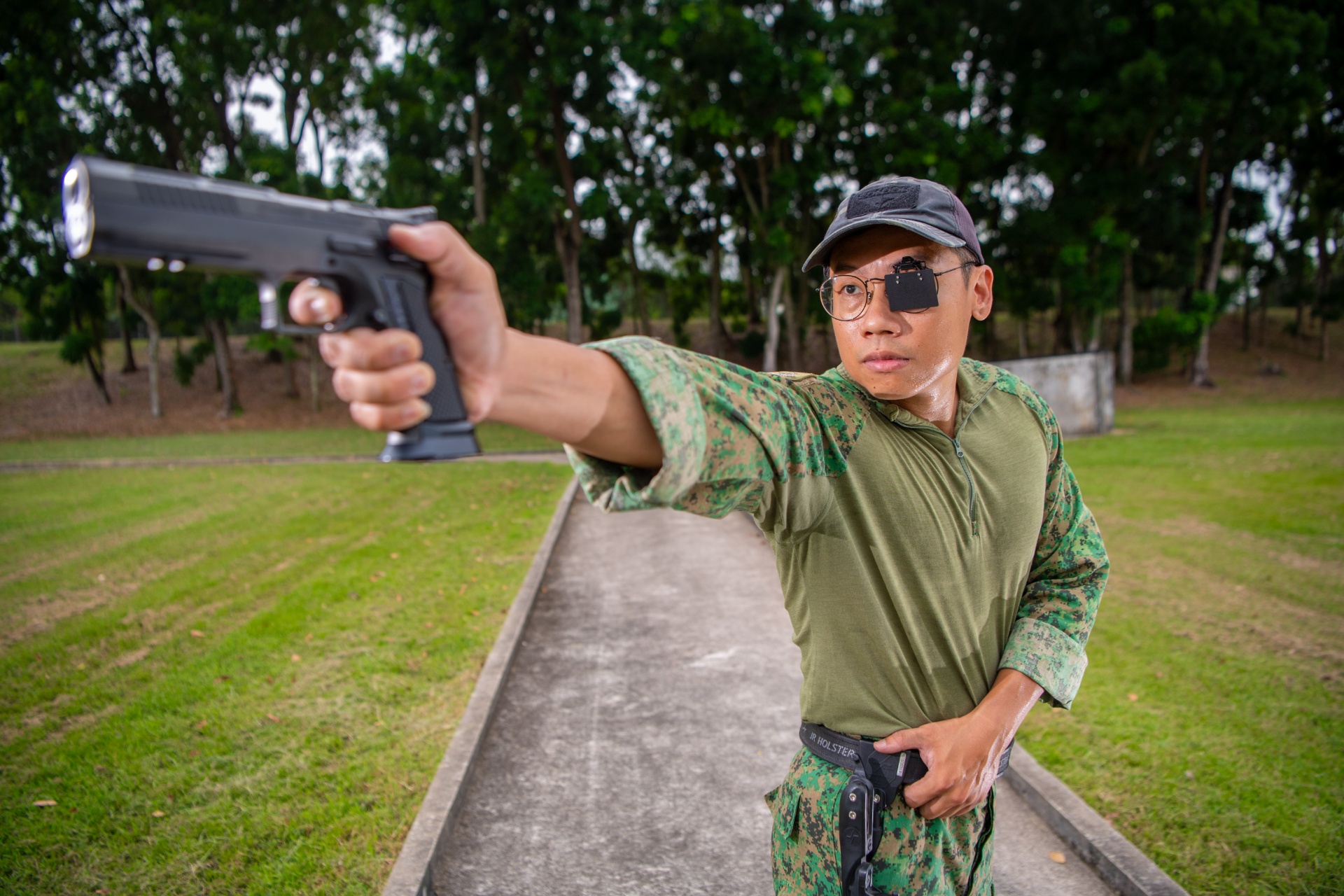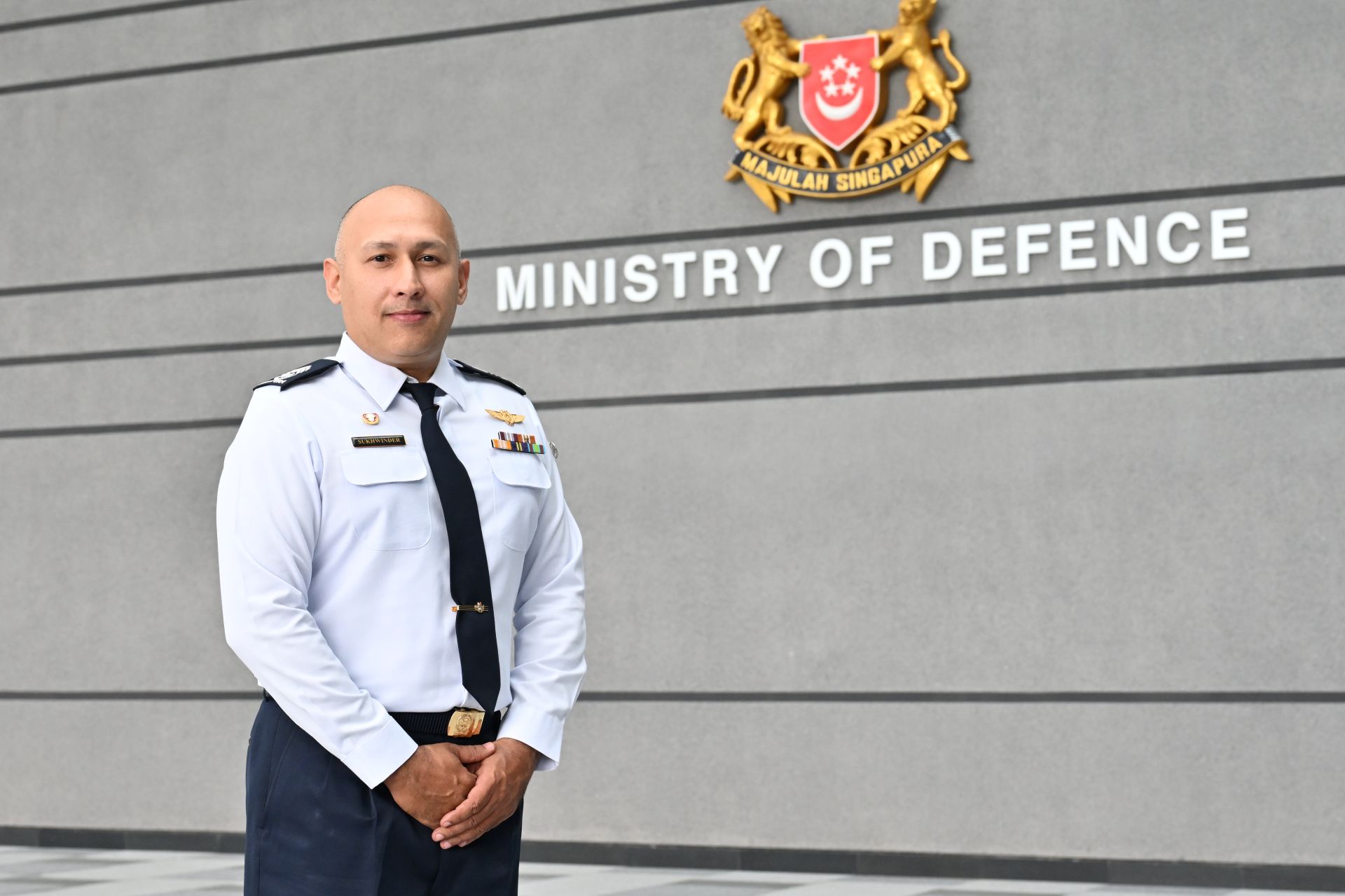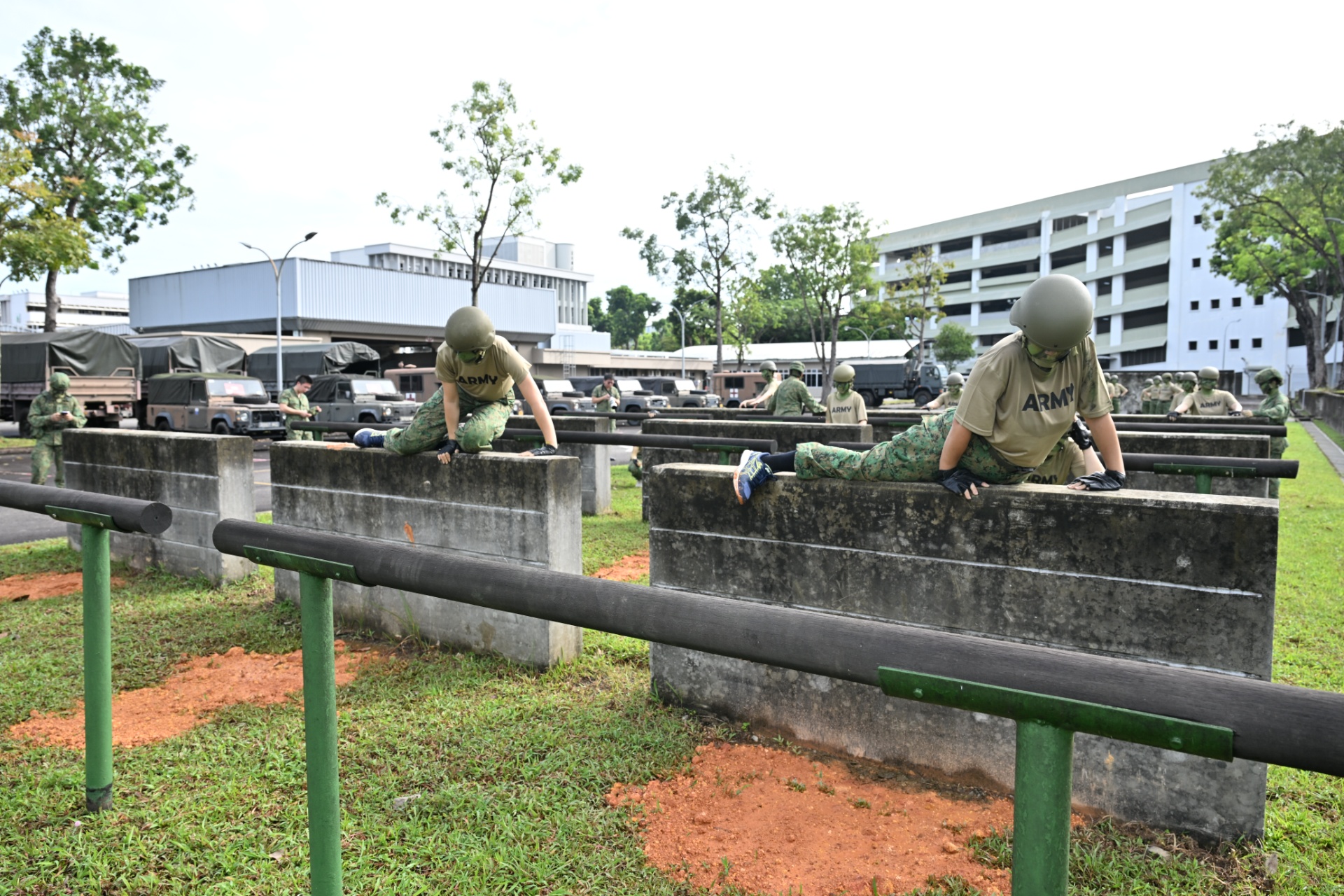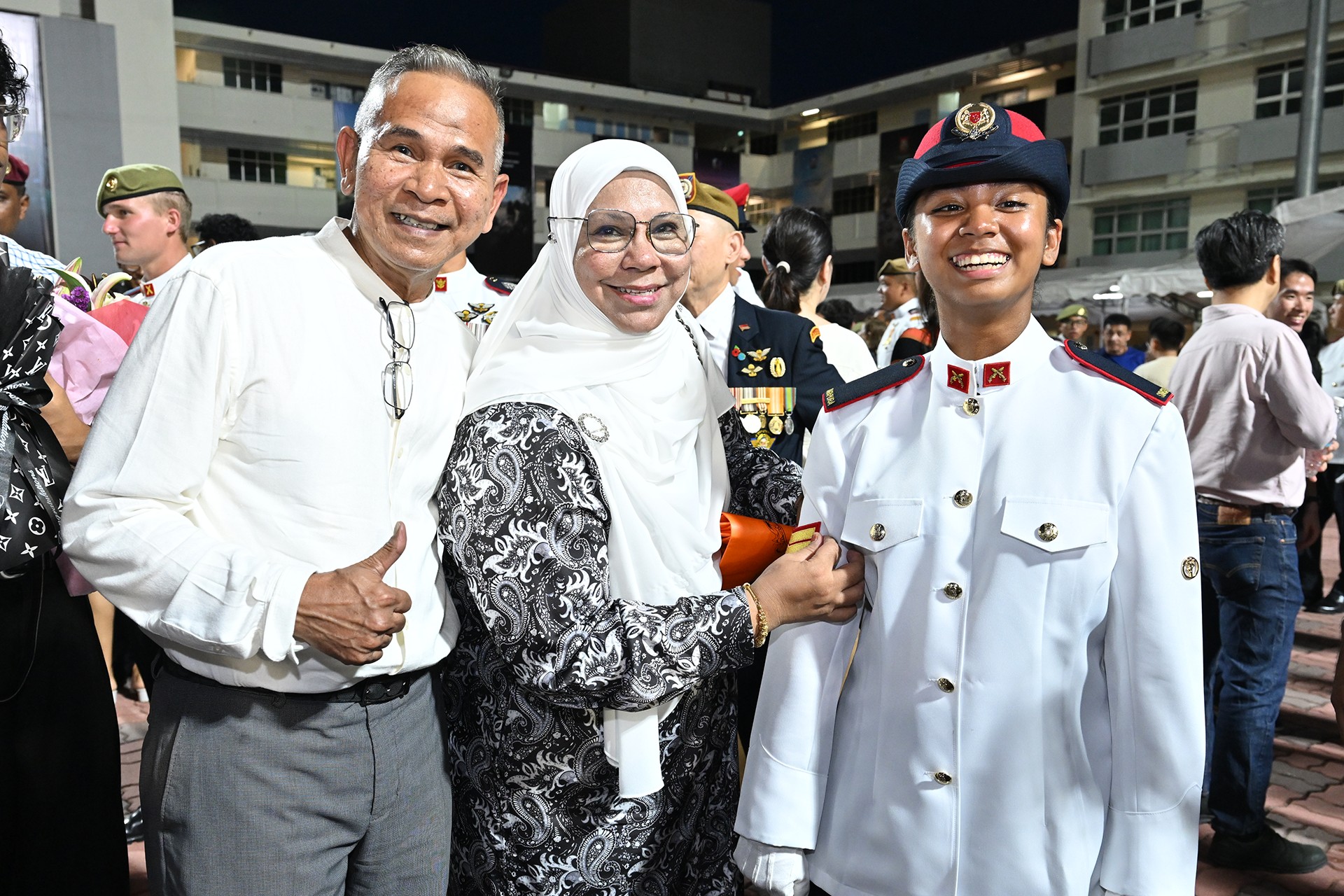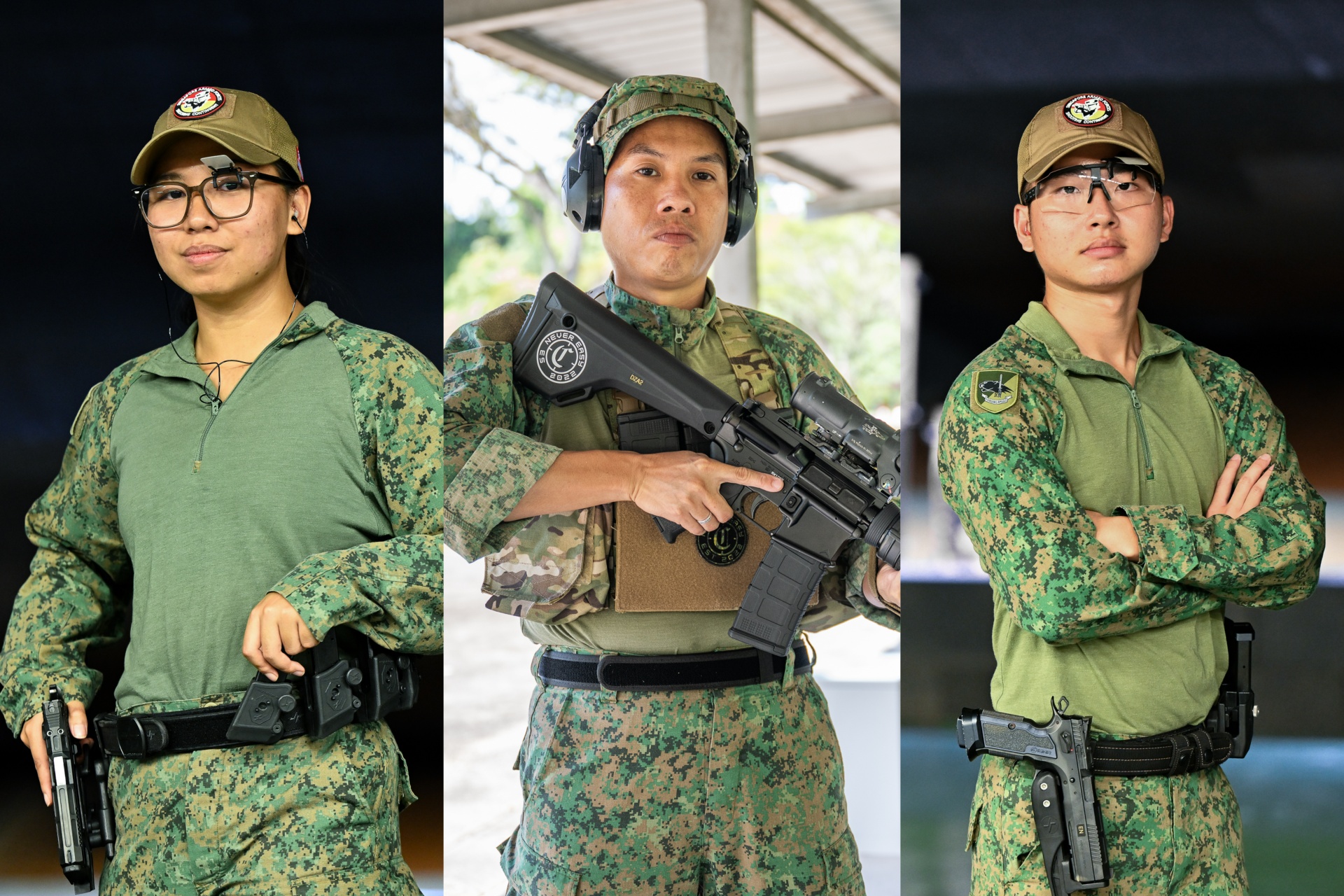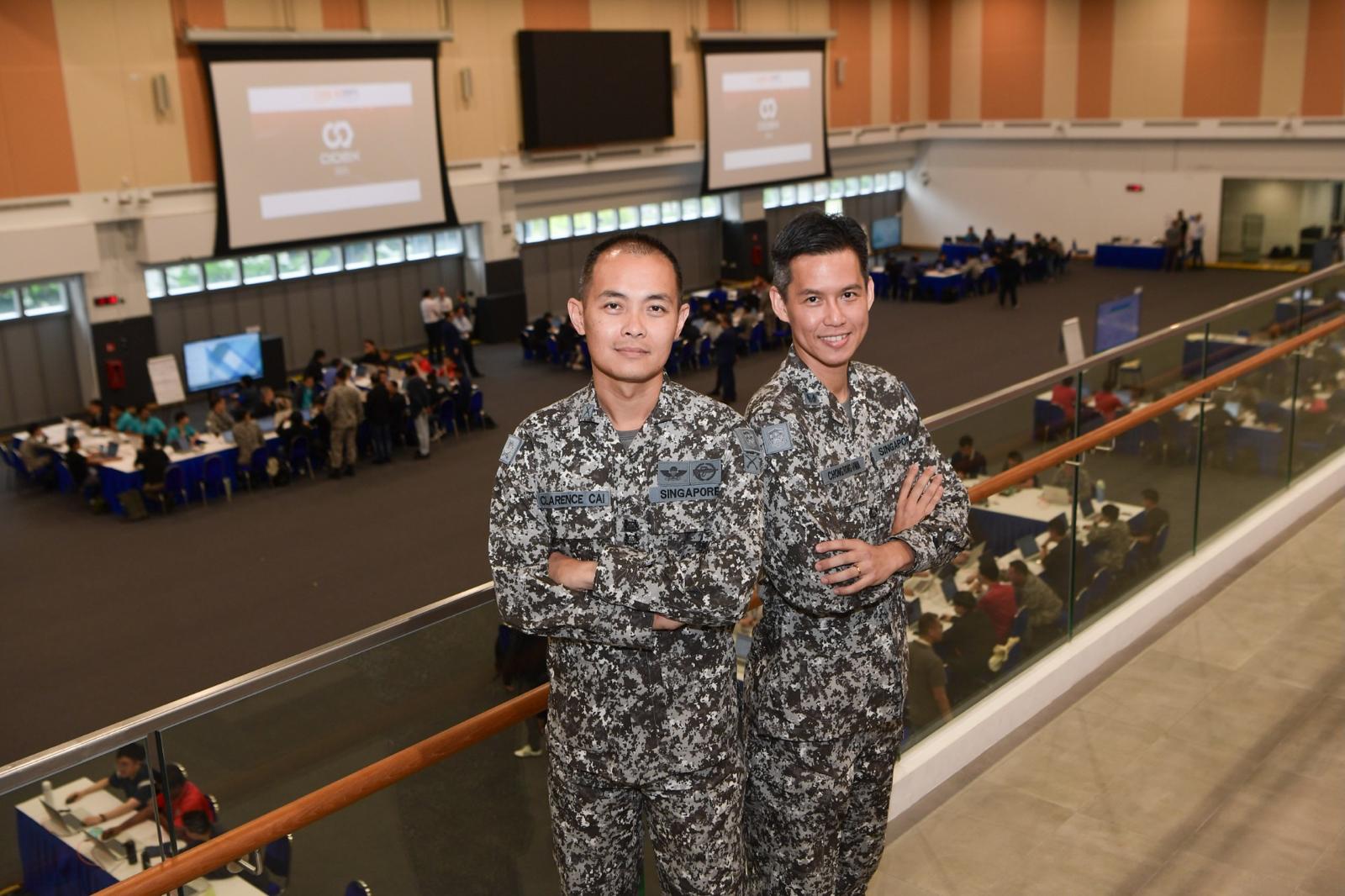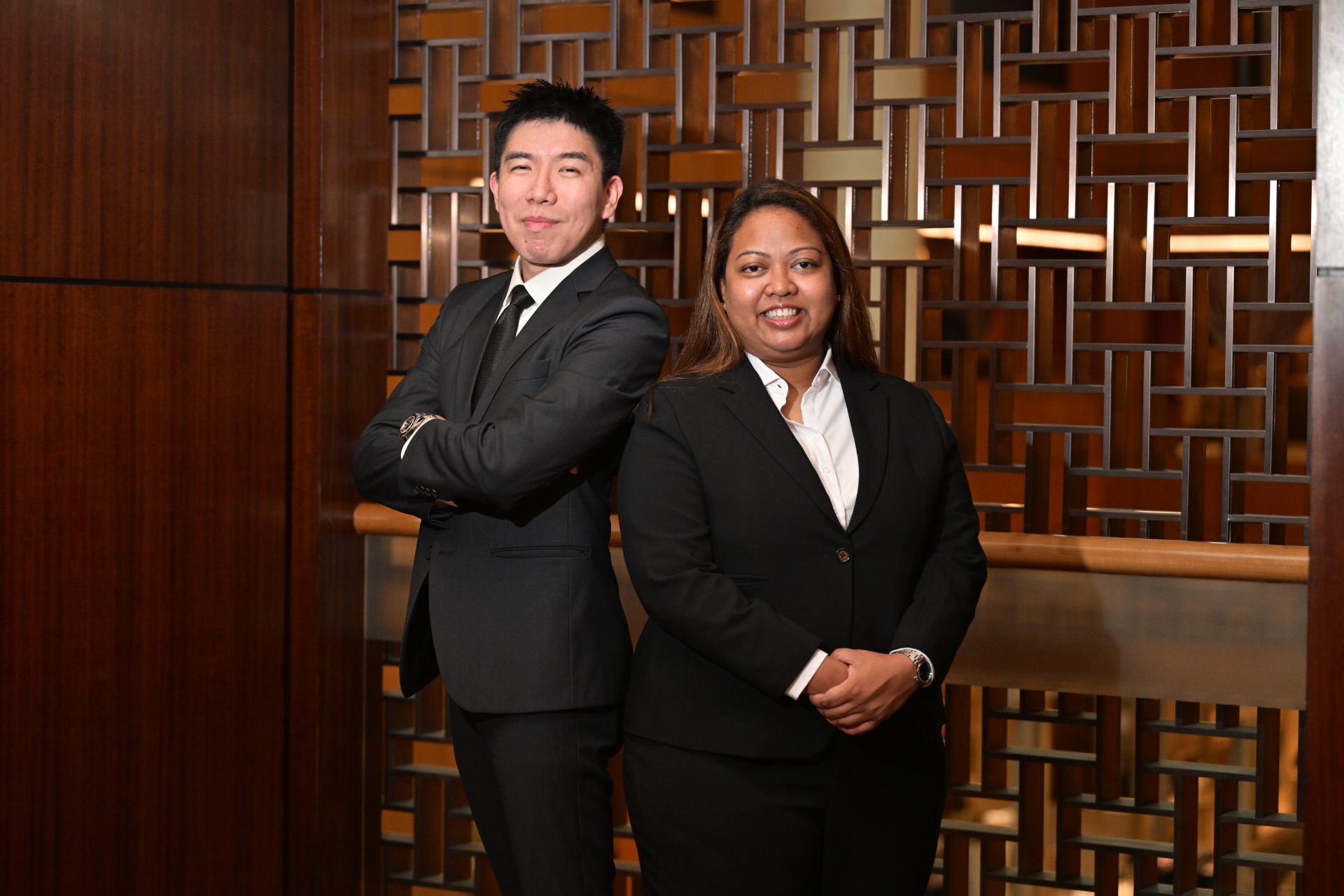CHANGI EXHIBITION CENTRE CONVERTED TO COVID-19 ISOLATION FACILITY
On 25 Apr, Changi Exhibition Centre (CEC) opened its doors to early and recovering COVID-19 patients. At the re-purposed community isolation facility, they will receive round-the-clock medical attention as well as beds, meals and WiFi.//Story by BENITA TEO //Photos by KENNETH LIN
The Changi Exhibition Centre (CEC) received its first COVID-19 patients on 25 Apr. About 50 foreign workers arrived at the community isolation facility (CIF), where they will spend the coming weeks recovering under the care of doctors, nurses and volunteers.
While healthcare professionals will be available 24/7 at the facility to attend to the patients' needs, technology has also been heavily deployed to augment manpower and increase patients' access to services.
For instance, patients feeling unwell can "see" a doctor through teleconsultation, and only visit the on-site medical centre if a physical consultation is required. Volunteers are also able to speak to the patients through telepresence robots to help with translations, or to send words of encouragement.
The re-purposing and management of the facility and its residents was made possible by nine MINDEF-related Organisations, which worked closely with managing agent Mandarin Oriental, Singapore and healthcare provider Raffles Medical Group.
A volunteer from the Singapore Indian Association demonstrating how communication can be done remotely via one of four Beampro Telepresence Robots available at the facility.
Volunteers who can speak Bengali, Hindi, Marathi, Tamil and Telugu are thus able to engage the patients virtually in their native language. Medical and facility staff can also use free translation apps to communicate with patients.
Raffles Medical Group has deployed a dedicated team of healthcare workers to care for the patients at CEC around the clock.
"It's been a very tough time for healthcare workers in general. Raffles Medical Group is very privileged to be part of this fight against COVID-19. The team is working very hard," said General Manager Yong Yih Ming.
"We are not just fighting the pandemic at CEC, but also at the various levels in the community through our GP clinics and at Changi Airport. I want to show my appreciation to healthcare workers around Singapore for their resilience and determination, and especially for being away from their families while contributing professionally."
Mr Edward Leong, Chief Executive Officer of SAFRA, has been working with the other MINDEF-Related Organisations to set up the CIF. More than 200 personnel from the organisations and partner agencies were involved, and the basic infrastructure was completed in about six days.
SAFRA was in charge of contingency planning, and dealt with matters such as establishing the medical infrastructure, protocols and processes together with Raffles Medical Group.
"When we were asked to be a part of the set-up of the CIF, we saw it as part of our wider responsibilities. It’s been a hectic 19 days. When we started, it was something we were unfamiliar with and the learning curve was very steep.
"But as a team of MINDEF-Related Organisations and with the support of the various agencies, we were able to set up the infrastructure and processes needed to run the facility."
Mandarin Oriental, Singapore came on board as the managing agent at the CEC. To ensure that their move into the facility is a smooth one, the team has created a "patient experience journey". This includes a welcome video in languages like Bengali and Tamil to help orientate them to the facility.
"Mandarin Oriental has always been a best-in-class luxury service hotel organisation (giving) the best experiences for our guests. In this way, we are providing good care of our patients…(so that they) have a good road to recovery," said Rooms Division Manager Mr Ian Soh.
"We've put in our senior management team, front office team and housekeeping team to provide their expertise to manage the operations well."
The Chevrons General Manager Tan Chong Boon and his team have been working almost every single day since they came on board on 6 Apr.
This includes packing about 3,000 welcome packs for the patients to provide them with essentials like toiletries, masks and thermometers. They had also been seeing to the set-up of the patients’ bunks, working with suppliers for items like bedframes and mattresses.
Calling them his "champions", Mr Tan noted that his team, which includes Singaporeans, Malaysians, Indians, Filipinos and Bangladeshis, all understand and want to help the situation in Singapore.
"They know they are doing this for a good cause, in particular for our foreign workers. Among them are foreign workers too. They know that if the foreign workers are not taken care of, we will have a manpower shortage."
